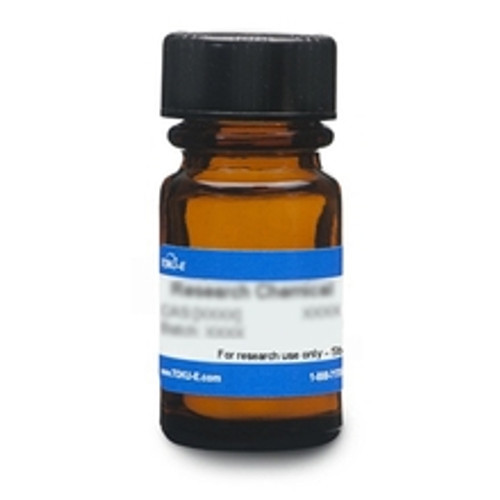Aminopterin is a 4-amino derivative of folic acid and a folic acid antagonist. It is a synthetic derivative of pterin. It has both mmunosuppressive properties and anti-cancer properties and can be used for apoptosis research. The compound was discovered by Dr. Subbarow in 1947 and was first used for pediatric leukemia, marketed by Lederle Laboratories (Pearl River, New York).
Aminopterin is considered a dangerous good. Quantities above 1 g may be subject to additional shipping fees. Please contact us for questions.
| Mechanism of Action |
Aminopterin is transported into cells via the folate transporter. Once inside the cell, it is converted to polyglutamate metabolite that binds to dihydrofolate reductase by competing for the folate binding site and inhibits its activity. It blocks tetrahydrofolate synthesis. This results in depletion of nucleotide precursors, which results in inhibition of DNA, RNA, and protein synthesis. Aminopterin-polyglutamate degrades intracellularly via y-glutamyl hydrolase. |
| Eukaryotic Cell Culture Applications | The antifolate Aminopterin is used in selection media, such as HAT medium (hypoxanthine-aminopterin-thymidine medium), particularly for the development of hybridomas, which secrete monoclonal antibodies. It acts as a folate metabolism inhibitor. The use of HAT medium is a form of selection for cells containing working TK (thymidine kinase) and HGRPT (hypoxanthine-guanine phosphoribosyltransferase). Aminopterin, via its blockage of the de novo pathway, forces the cells to use the salvage pathway. Hypoxanthine and thymidine are converted by TK and HGRPT but if either of these enzymes is missing as is myeloma cells, then purine or pyrimidine synthesis is blocked and the cells die. Hybrid cells (myeloma-spleen hybrids) can survive as they inherited the enzyme from the lymphocyte parent. |
| Cancer Applications | A virtual screening model was used to screen multiple target inhibitors for breast cancer, and may act as a potential inhibitor for improving endocrine therapies for breast cancer (Dai et al, 2021). |
| Molecular Formula | C19H20N8O5 |
| References |
Bertino JR (2009) Cancer research: From folate antagonism to molecular targets. Best Pract. Res Clin. Haematol 22(4):577-582 Dai Y et al (2021) Drug screening of potential multiple target inhibitors for estrogen receptor-α-positive breast cancer. In Vivo. 35(2):761-777 Cadahia J et al (2018) Synthesisand evaluation of hydrogen peroxide sensitive prodrugs of methotrexate and aminopterin for the treatmenet of rheumatoid arthritis. J. Med. Chem. 61(8):3503-3515 |


